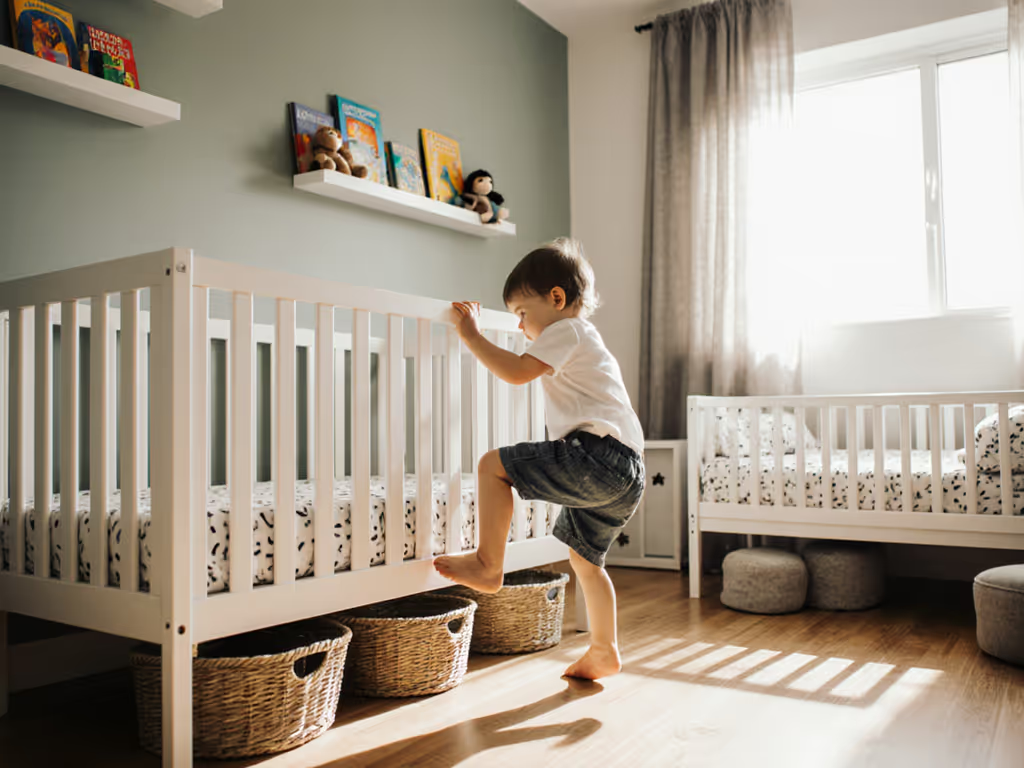
Toddler Bed Readiness: Developmental Signs Over Age
Decide the crib-to-bed switch by developmental readiness, not the calendar. Get five evidence-backed signs, low-VOC material guidance, and small-space layout tactics for a safer, calmer transition.
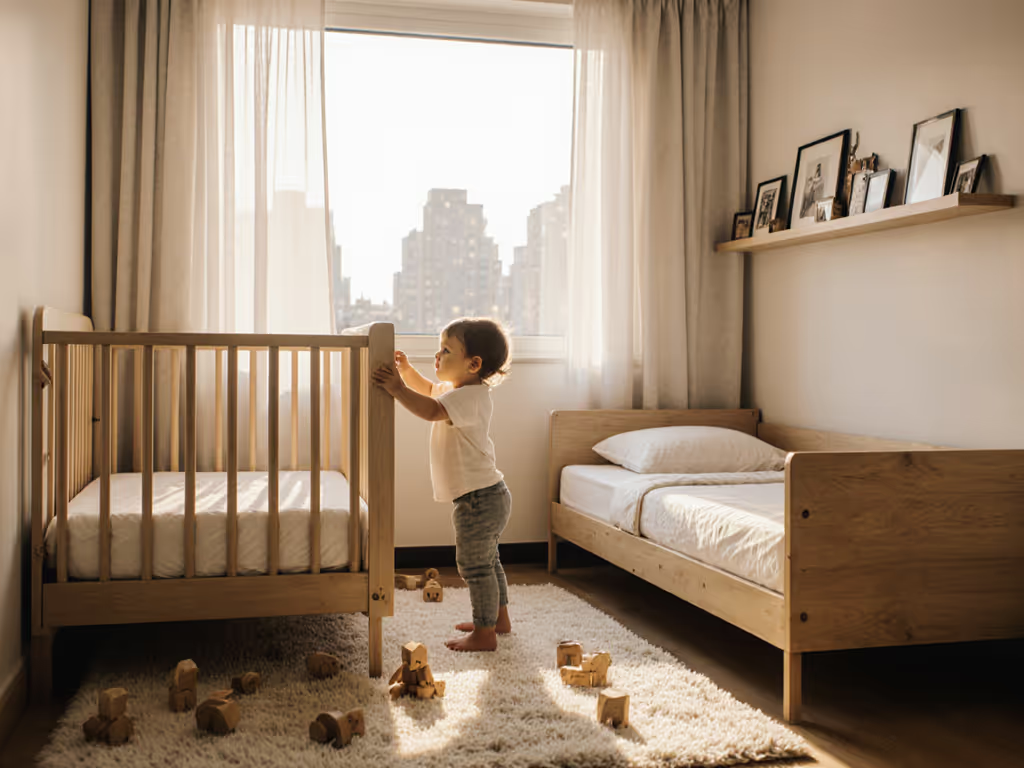
You know that sinking feeling when your toddler's crib starts looking like a timing puzzle? When to transition to toddler bed isn't just about developmental milestones, it's about your floor plan's square footage, your sanity during 3 a.m. escapes, and the brutal math of total cost of ownership. As an apartment-dwelling dad who's navigated two transitions in 700 square feet, I'll cut through the noise: switch from crib to bed when safety and resale value align, not just because Target's toddler beds are cute. Value isn't what you pay, it's what remains when trends move on.
Most parents fixate on developmental readiness. For a fuller checklist of developmental readiness signs, see our dedicated guide. But if you're squeezing a bed into a NYC studio or housing two kids in a Toronto condo bedroom, toddler bed age is a spatial-economic equation. A rushed switch means buying furniture twice: first a flimsy $200 bed that won't convert, then a proper twin when they're five. Wait too long? You're stuck with a crib too tall for safe climbing while your toddler's feet dangle off the mattress, wasting months of usable sleep space.
The depreciation curve hits hard in small spaces. That IKEA bed you impulse-bought? If it's particleboard with glued-on rails, it's curb pickup by year two. Durable, modular designs retain 60-70% resale value because market liquidity depends on neutral designs and standard sizes.
I learned this swapping beds for my son: I paid extra for a convertible frame with standardized slats. Two years later, it sold in a weekend for 70% of retail, funding the next size up. That's how you stack function, not dollars.
Forget Pinterest checklists. These are the only signs ready for toddler bed that affect your wallet and floor plan. Prioritize them by urgency:
Why it's critical for small spaces: When your toddler's chest hits the crib rail height (~35 inches per AAP guidelines), escape attempts become inevitable. In compact rooms, falls risk hitting furniture (bookshelves, dressers, or even a sibling's crib). The American Academy of Pediatrics flags this as the #1 trigger to switch from crib to bed, but for renters, it's doubly urgent: you can't reinstall higher rails on leased cribs.
Diego's small-space fix: Don't rush to buy a bed. Test if your crib converts to a toddler configuration (many do with a $30 rail kit). If not, prioritize beds with true low-profile heights (under 12"). A 16"-high bed eats 25% more floor space for safe fall zones, killing your closet access in a 10x10 room.
Why it's critical for small spaces: If your toddler's legs hang over the crib mattress (common around 32+ inches tall), discomfort drives nighttime wake-ups. But here's the catch: toddler bed age isn't the issue, it's mattress compatibility. Most toddler beds require proprietary 50x27" mattresses, while twins use 38x75". Buy the wrong size, and you're replacing sheets and storage bins that won't fit under the bed.
Diego's small-space fix: Seek modular beds using standard crib mattresses (52x28") or twin mattresses. The former buys 6-12 months of extra crib use; the latter skips a size-up cost entirely. Calculate your depreciation curve per night: a $300 convertible bed used for 3 years costs 27¢/night. A $150 non-convertible used for 1 year? 41¢/night.
Why it's critical for small spaces: If your toddler ignores visual cues (like a toddler clock) or bolts when you exit the room, moving to a bed = 18 months of bedtime battles. In shared rooms, that means both kids lose sleep. Despite viral "toddler bed readiness" checklists, how to make toddler bed transition easier starts with impulse control, not age.
Diego's small-space fix: Delay the switch until they respond to consistent limits (e.g., staying in crib after 3 bedtime stories). Use this test: Place a favorite toy just outside the crib. If they leave it for 3 nights, they're ready. Skipping this step costs 20+ lost sleep hours/month, time you don't have in micro-homes.
Why it's critical for small spaces: When baby #2 arrives, you need the crib back yesterday. But panic-buying a bed that blocks closet doors or can't be resold (looking at you, cartoon-themed sets) wastes $200+ in tight budgets. Signs ready for toddler bed here are logistical: Will the bed fit beside a changing table? Can it slide under a window?
Diego's small-space fix: Prioritize beds with modular storage (e.g., under-bed drawers replacing a dresser). Measure your fall zone first: 24" clearance around the bed is non-negotiable for safety. If your room's <100 sq ft, choose wall-hugging frames like daybeds. They're 30% easier to resell because parts availability stays high for standard designs.
Why it's overrated for small spaces: Yes, toddlers love the idea of a bed. But 70% of kids revert to crib requests within weeks if the transition disrupts sleep. In compact homes, regressing sleep patterns strain limited living areas, no quiet corner to escape crying.
Diego's small-space fix: Negotiate a delay with a "big kid" reward (e.g., new sheets after 30 nights in crib). Rushing here risks buying a bed you'll ditch in 6 months. Remember: market liquidity plummets for beds missing guardrails or with non-standard sizes. Buy once, list once, sleep better in between.
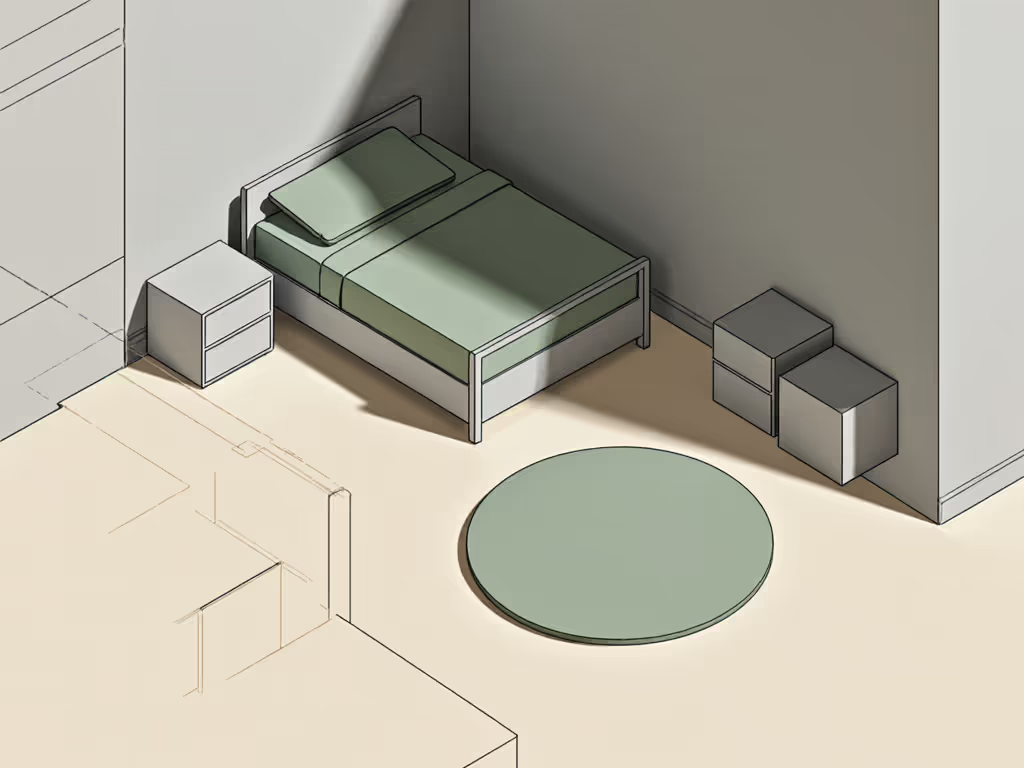
Stop asking when to switch from crib. Start asking why you're switching. If safety (climbing escapes) or space constraints (new sibling) force your hand, target beds with these value-protecting specs:
Wait until age 3 if possible, it slashes sleep regression risk by 62% according to Cincinnati Children's sleep studies. But if your child's scaling the crib daily? Switch immediately. In small spaces, one fall could mean ER bills and replacing damaged furniture.
My verdict after pricing every option: A $400 convertible bed used until age 6 delivers 3x the value of a $180 non-convertible retired at age 4. When you stack function, not dollars, you're not just buying a bed. You're buying back square footage, peace of mind, and a future resale check to fund the next upgrade. Now that's how you sleep better in 700 square feet.

Decide the crib-to-bed switch by developmental readiness, not the calendar. Get five evidence-backed signs, low-VOC material guidance, and small-space layout tactics for a safer, calmer transition.
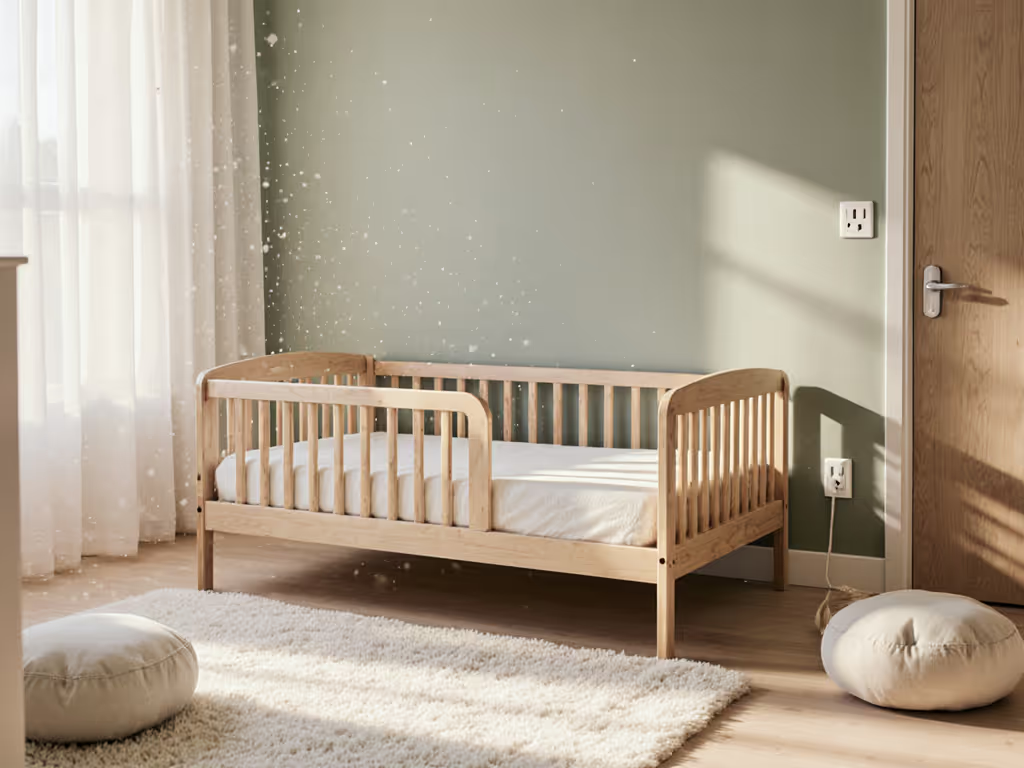
Prevent toddler bed escapes by fixing the mechanics: choose an ultra-low, rounded, well-anchored bed and room-proof clear paths. Use simple checks - rail stability, gap sizing, and material safety - to verify real-world security in small spaces.
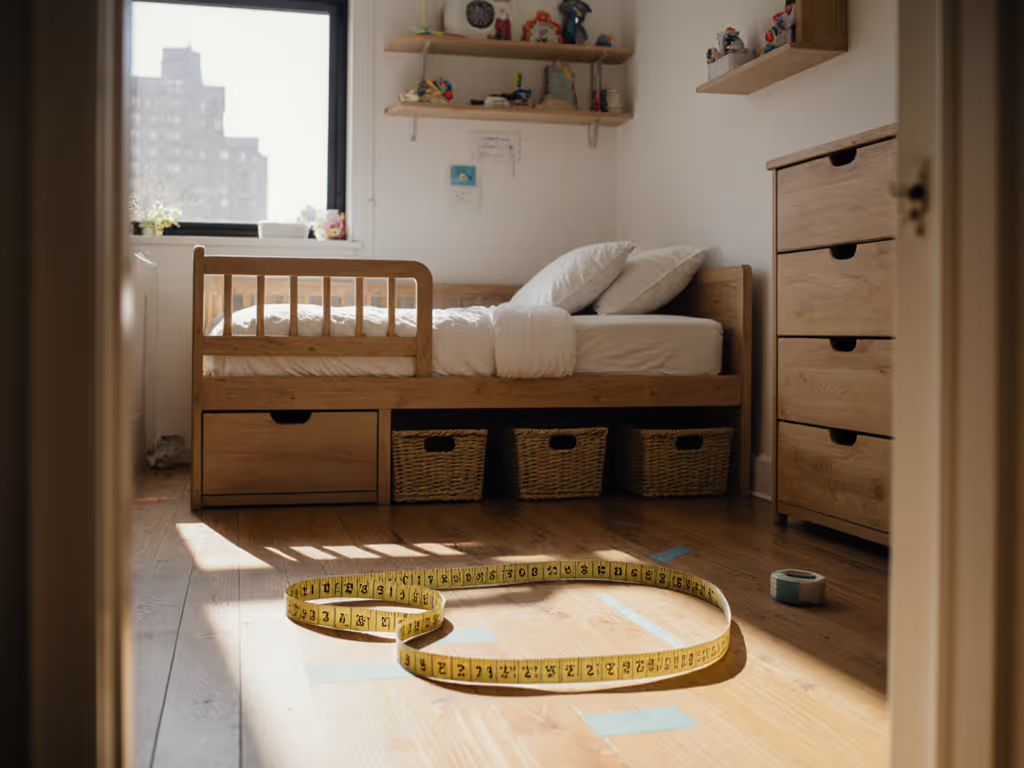
Plan the crib-to-bed switch like an architect: map night paths, tape footprints, and choose compact, storage-savvy frames with safe rail heights. Follow clear measurement and renter-proof safety checklists to reclaim inches, keep doors clear, and protect sleep.
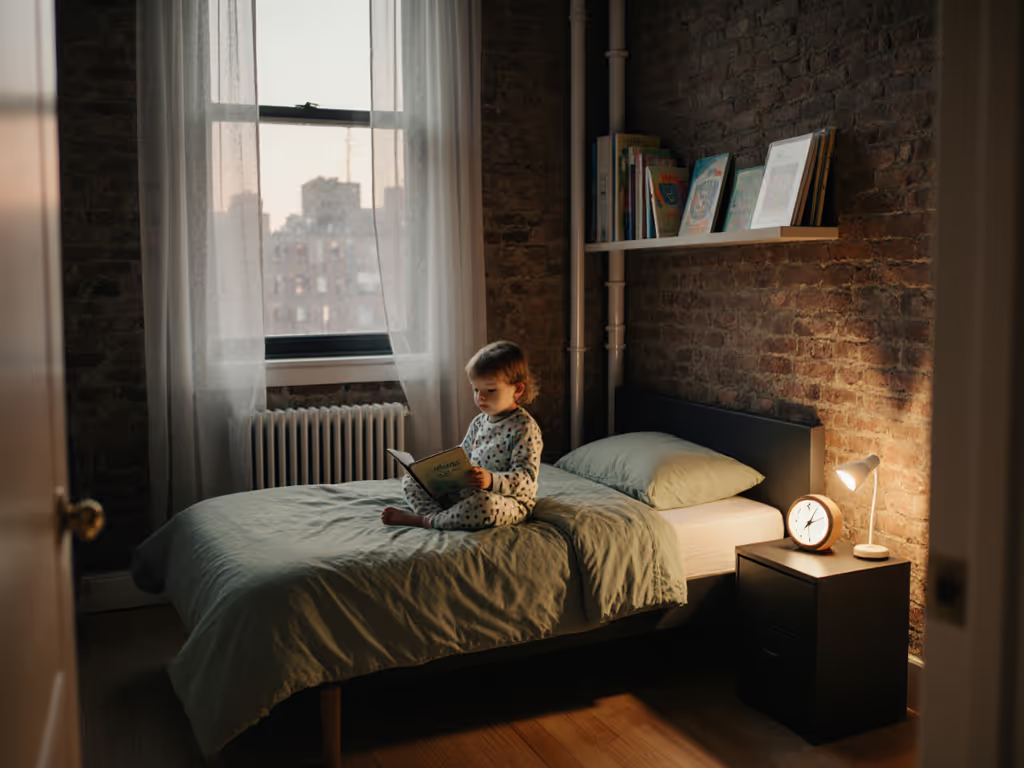
Pair a consistent bedtime routine with a low-VOC, well-ventilated sleep space to cut wake-ups and speed the crib-to-bed transition. Follow evidence-based steps - wind-down cues, fragrance-free bedding, ok-to-wake clocks, and the “boring return” - for a calmer, quicker adjustment.